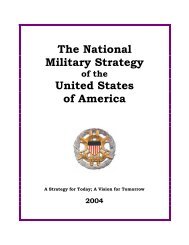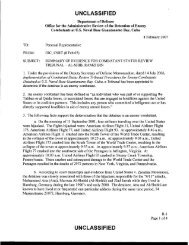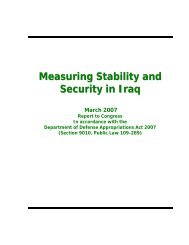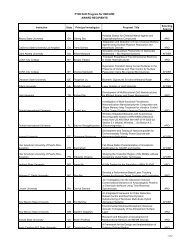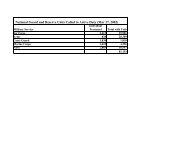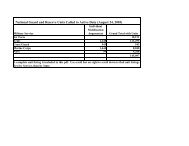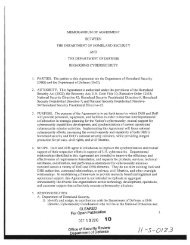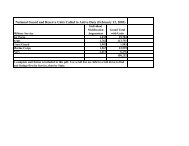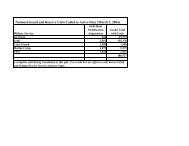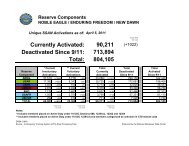Report - United States Department of Defense
Report - United States Department of Defense
Report - United States Department of Defense
Create successful ePaper yourself
Turn your PDF publications into a flip-book with our unique Google optimized e-Paper software.
UNCLASSIFIED<br />
Enforcement Administration (DEA) and other U.S. government <strong>Department</strong>s and Agencies to<br />
support the overall CN strategy for Afghanistan.<br />
The main goal <strong>of</strong> ISAF’s CN strategy is to reduce the ability <strong>of</strong> the insurgency to draw support<br />
from the narcotics industry. RC-S and RC-SW remained priority areas for military and law<br />
enforcement CN efforts during the reporting period. These regions constitute principal areas for<br />
Afghan poppy cultivation, and as such, are major sources <strong>of</strong> revenue for the Taliban-led<br />
insurgency. DoD’s role in supporting CN operations includes building the capacity <strong>of</strong> the<br />
Counternarcotics Police <strong>of</strong> Afghanistan (CNP-A), improving border security, promoting<br />
information sharing, and fostering regional and international cooperation.<br />
Despite this high operational tempo and a number <strong>of</strong> large seizures and high-pr<strong>of</strong>ile arrests<br />
during the reporting period, overall coalition and ANSF CN interdiction efforts have had a small<br />
but not insignificant effect on overall insurgent pr<strong>of</strong>its from narcotics. However, the narcotics<br />
market in Afghanistan is large, and insurgent penetration <strong>of</strong> that market is extensive and<br />
expanding. CN interdiction operations in one area can be supplanted by the insurgents<br />
increasing pr<strong>of</strong>its in other areas, such as donations and kidnapping for ransom.<br />
CN interdiction operations, in addition to crop substitution, subsidies to farmers, targeted arrests,<br />
the disruption <strong>of</strong> narcotics trafficking networks, and increased CN-focused rule <strong>of</strong> law together<br />
have the potential to reduce significantly insurgent financing from narcotics. However, none <strong>of</strong><br />
these efforts individually will be able to have a major effect. The political will <strong>of</strong> the Afghan<br />
government and the transition <strong>of</strong> security to Afghan forces remain the greatest challenges to<br />
implementing this comprehensive CN program.<br />
The <strong>United</strong> <strong>States</strong> published a new CN Strategy for Afghanistan in January 2013. This revision<br />
prioritizes CN assistance during the security transition and drawdown <strong>of</strong> U.S. and coalition<br />
combat forces. ISAF continues to assist the Afghan Government in developing its<br />
counternarcotics capacity and capability for the eventual transition to greater Afghan<br />
responsibility.<br />
Although the Afghan Counter-Narcotics Judicial Center (CNJC) continues to perform admirably,<br />
further progress is needed to reduce corruption in the justice sector and in state functions<br />
important to transition such as border checkpoints, airports, and inland customs depots.<br />
Nonetheless, U.S. Border Management Task Force-trained Afghan customs <strong>of</strong>ficials are making<br />
significant progress in airport security at KAIA.<br />
Counternarcotics Operations<br />
The DEA, the CNP-A National Interdiction Unit (NIU), and ISAF maintained a high CN<br />
operational tempo throughout the reporting period, conducting several major increasingly<br />
Afghan-led CN operations. ISAF targeting <strong>of</strong> high-value individuals and their support zones<br />
applied pressure on the networks and caused temporary dislocations; however, with their ability<br />
to quickly adapt new tactics, the narcotics networks are likely to continue to function. The<br />
concentration <strong>of</strong> raids was in northern Helmand and Nimroz; vehicle interdictions were focused<br />
in central and southern Helmand and along the RC-SW/RC-W boundary in northern Nimroz. A<br />
147



